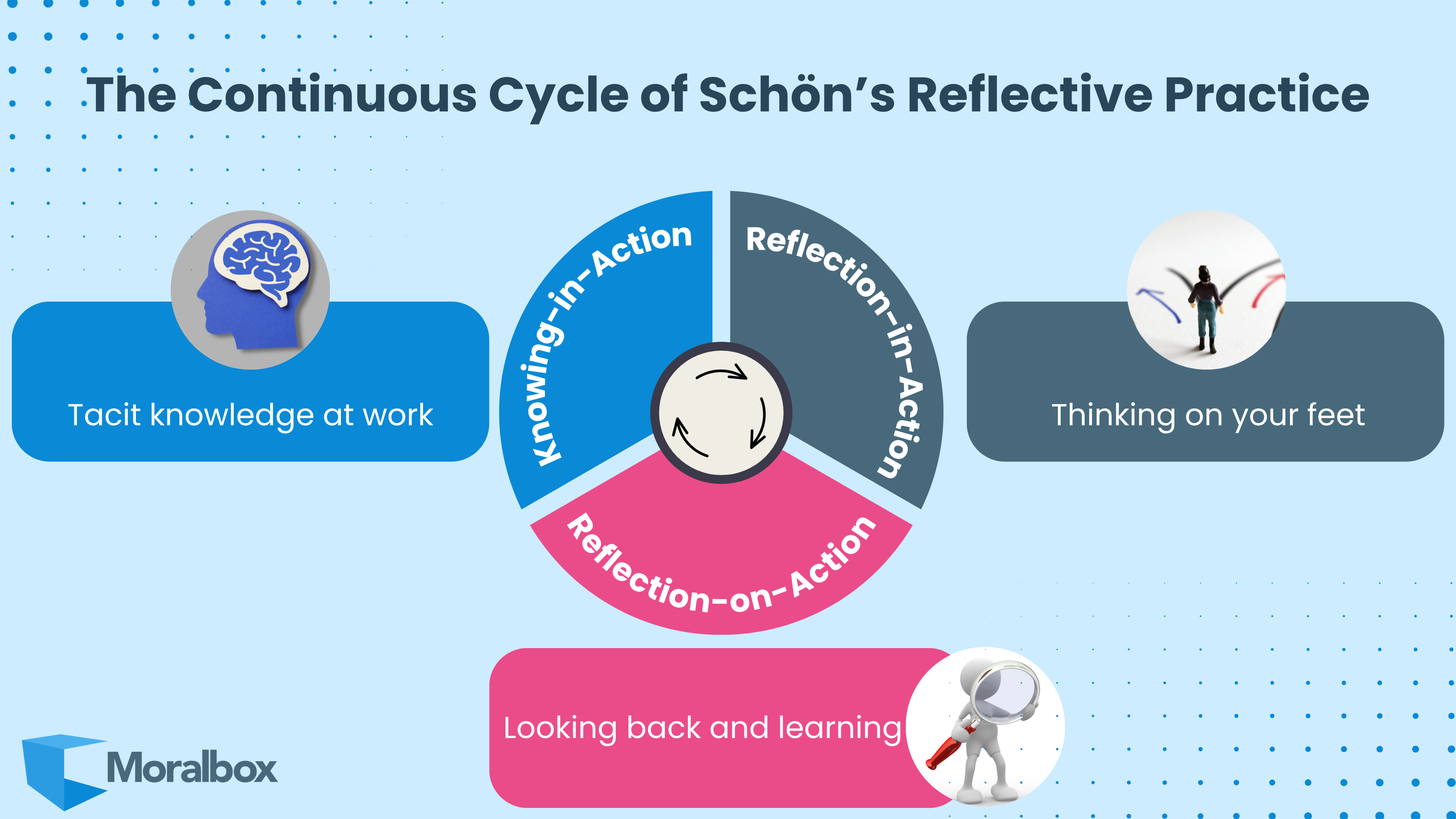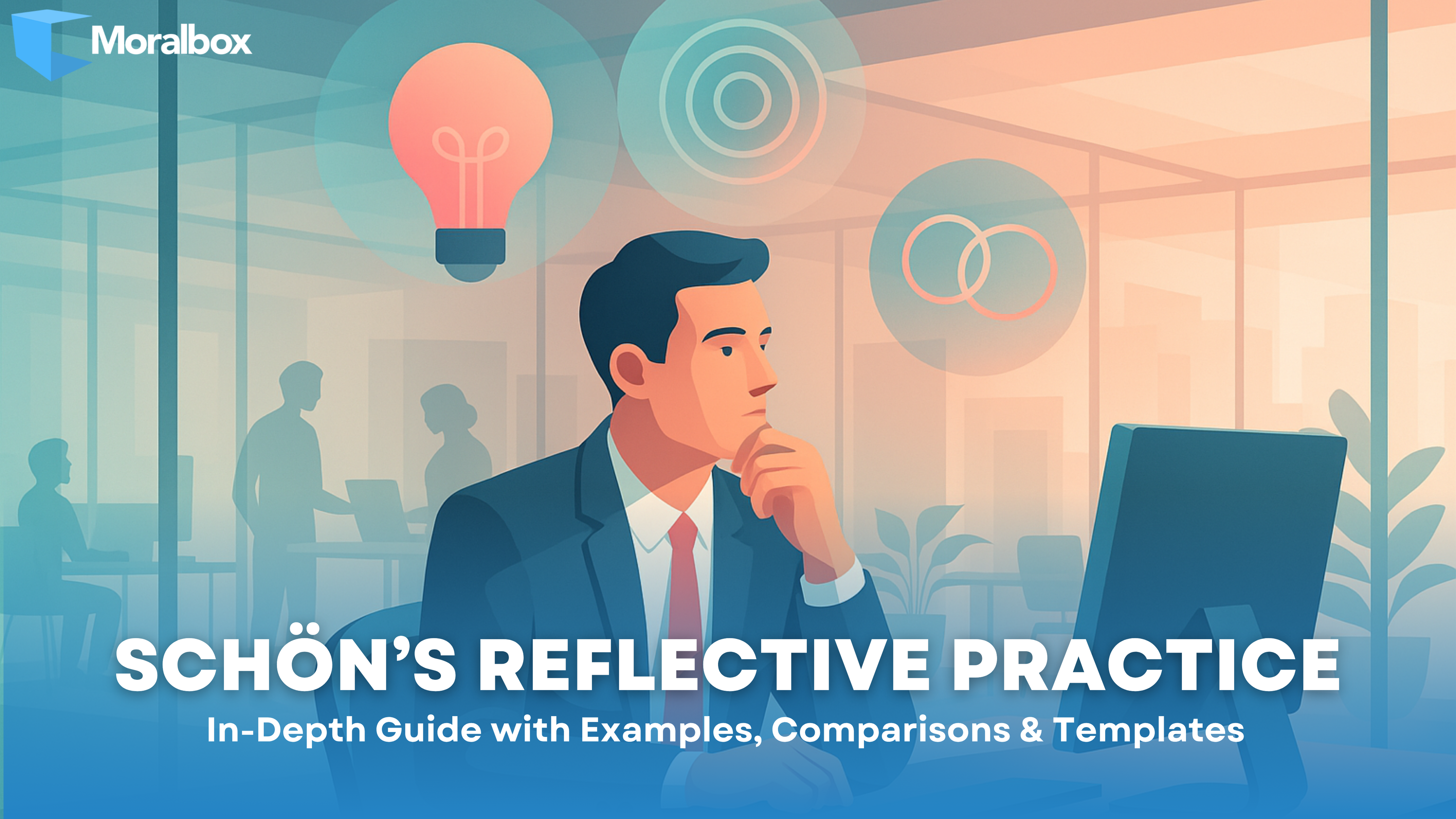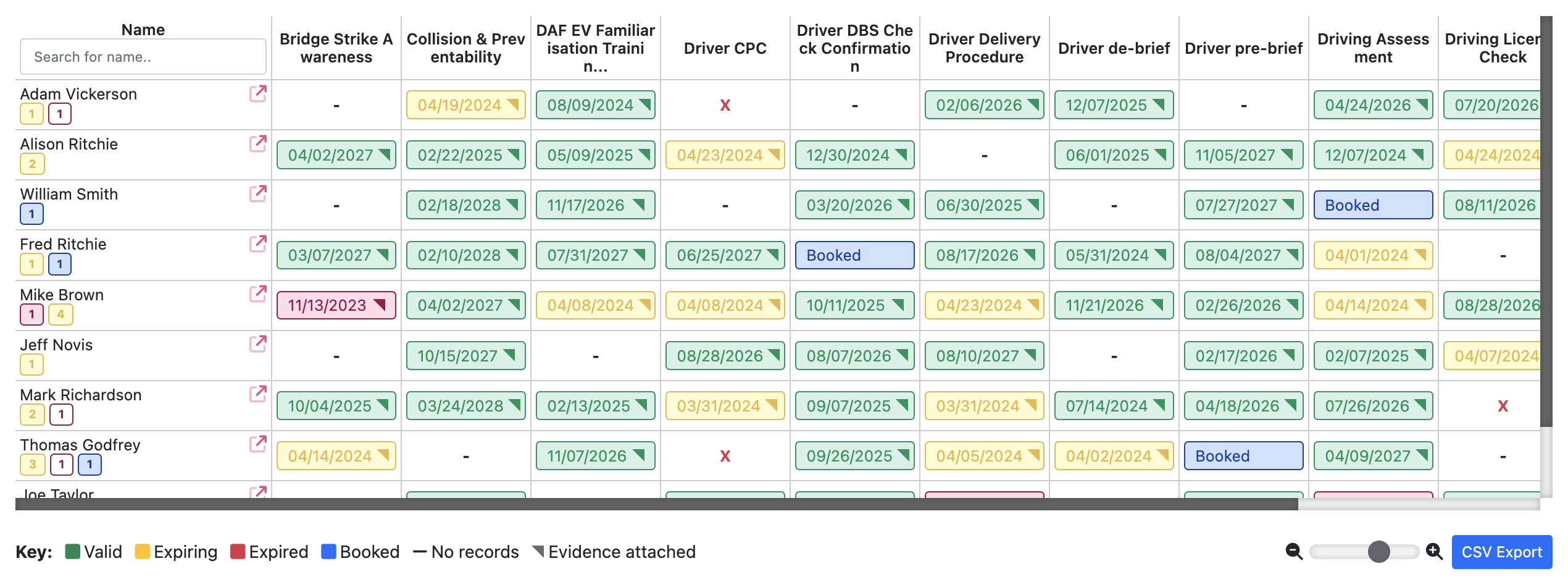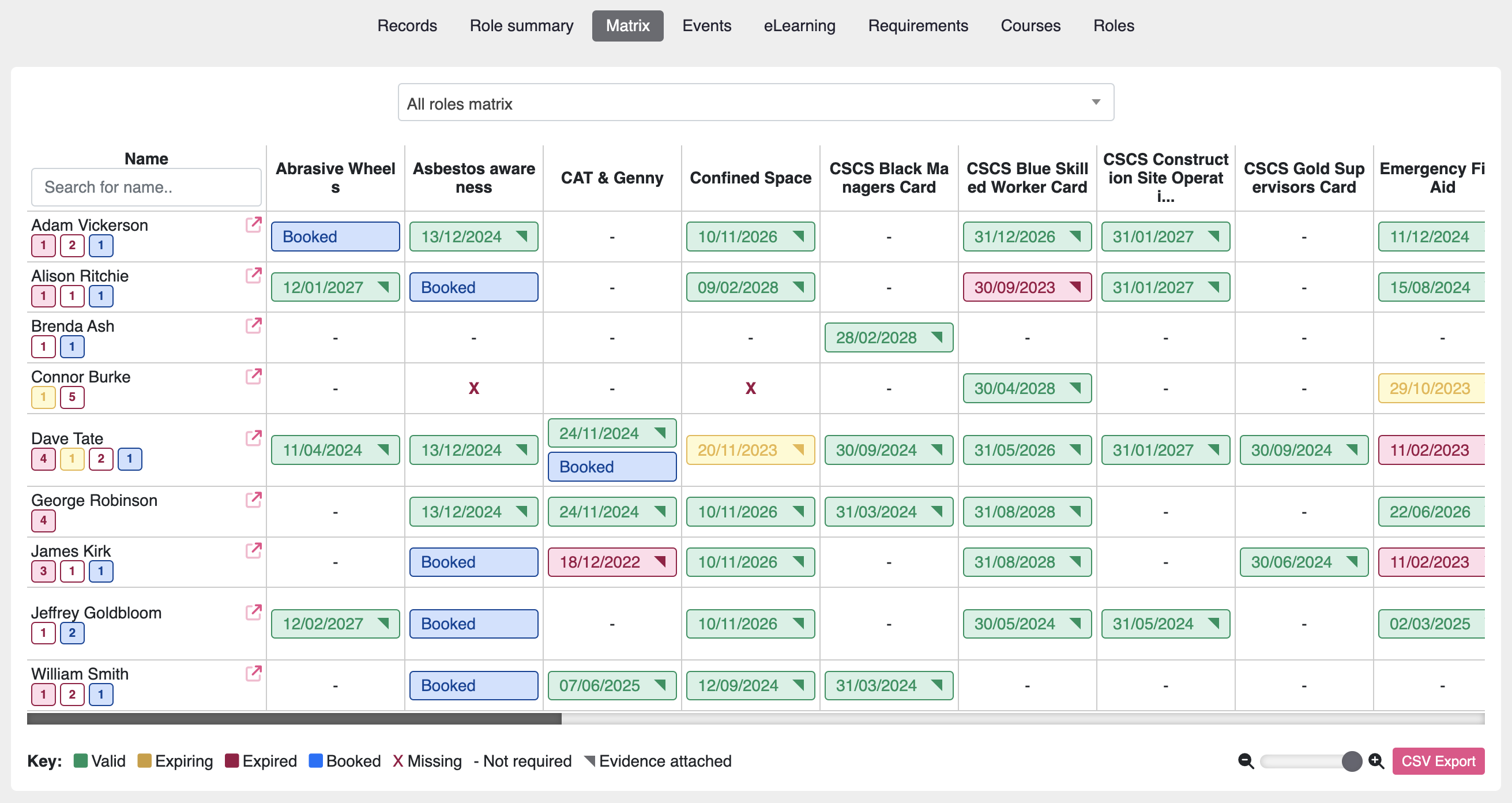See Schön’s Reflective Practice in Action
You’re leading a team meeting and halfway through, something isn’t working, maybe a project stall, a misunderstanding, a shift in tone you didn’t expect. As a result, you sense the change, adjust your approach in real time, and recalibrate how you lead. Then afterwards, you think back: what caused that shift? What could you have done differently? That moment of adjusting in the moment, then reflecting afterwards, that’s Schön’s Reflective Practice in action!
It’s about learning from doing and not just after the fact. In other words, it bridges experience with reflection. In this article, we’ll explore what Schön’s Reflective Practice is, how it’s applied, what recent research says (both in favour and critical), comparisons to other models, and, importantly, actionable tools you can use to embed it in your work or teaching.

Table of Contents
- See Schön’s Reflective Practice in Action
- Who Was Donald Schön & Why His Model Still Matters
- Steps in Schön’s Reflective Practice (Reflective Cycle)
- Applying Schön’s Reflective Practice in Different Fields
- Template / Prompt Suggestions
- What Recent Research Shows
- Criticisms & Limitations
- How Schön’s Reflective Practice Compares to Other Models
- Advanced Uses & Embedding in Organisational Culture
- Free Templates & Practical Tools
- Critiques & Questions for Reflection
- Conclusion & Next Steps
- FAQs
- References
Who Was Donald Schön & Why His Model Still Matters
Donald A. Schön was a philosopher, educator, and organisational theorist whose work in the 1980s challenged the then-dominant view that professional knowledge is purely technical or theoretical. Instead, he introduced the idea that in complex real-world practice, professionals often rely on tacit knowledge and respond in the moment to what he called reflection-in-action, while additionally learning after the fact (reflection-on-action).
These ideas remain deeply relevant in fast-changing workplaces: leadership, education, healthcare, design, and most importantly, wherever uncertainty, ambiguity, or human complexity are the norm rather than the exception.
Steps in Schön’s Reflective Practice (Reflective Cycle)
| Concept | What It Is | Examples | |
| Knowing-in-action | The tacit, often intuitive knowledge that underlies what professionals do without always being consciously aware. | A nurse noticing subtle patient cues; a teacher sensing class mood without stopping to plan. | |
| Reflection-in-action | Reflective thinking and adjustment that happen during the activity, essentially thinking on your feet and making changes in real time. | A project manager alters the meeting agenda mid-session when a technical issue arises or feedback shifts. | |
| Reflection-on-action | Reviewing and analysing what happened after the event to draw lessons and plan future improvement. | Post-mortem meeting; journaling after a lecture; discussing with peers what worked/didn’t. |
These parts work together: knowing-in-action supports what you do, reflection-in-action lets you adapt in real time, and reflection-on-action allows learning and refinement.

Figure 1: The Continuous Cycle of Schön’s Reflective Practice
Applying Schön’s Reflective Practice in Different Fields
Here are practical ways people use it in education, healthcare, leadership, etc., complemented by the templates and prompts to help you apply it in the following sectors:
- Teachers can pause mid-lesson when something isn’t going well (reflection-in-action), adjust their approach, and afterwards reflect on what worked.
- Sometimes, using reflective journals, such as writing entries after each lesson, can help capture thoughts on pedagogy, student interaction, and classroom climate.
- During patient interactions, health professionals may notice nonverbal signs asking for immediate response (reflection-in-action). Afterwards, they can review outcomes to understand unexpected reactions and, consequently, refine their approach.
- Peer reflection groups, in particular, structured case discussions help surface assumptions and blind spots.
- When leading a change process, recognise resistance as it arises and modify the strategy in real time.
- Later, hold structured reviews involving team reflections so that lessons translate into new practices.
Template / Prompt Suggestions
You might include these in a downloadable worksheet so that reflection becomes routine.
Reflection-in-Action Prompts:
- What is happening now?
- What assumptions am I making?
- What small adjustments can I try immediately?
Reflection-on-Action Prompts:
- What were the outcomes of my actions?
- What surprised me?
- What would I do differently next time?
- What theories, frameworks, or knowledge could help me understand this better?
Use a simple template to put this into action:
Situation:
What I did (knowing-in-action + reflection-in-action):
What Happened / Outcomes:
Reflection (on action):
Lessons / Future Actions:
Would you like to put this into practice straight away?
Try our Schön’s Reflective Practice: 7-Day Challenge – a simple, daily set of micro-tasks (5–10 minutes each) to help you build reflection-in-action and reflection-on-action habits.
What Recent Research Shows
To make your use of Schön’s Reflective Practice more credible, here are findings from recent scholarship that support its relevance & extension.
- Complexity in Education – Conceptualising the complexity of reflective practice in education (2022) argues that reflective practice is dynamic and participatory; Therefore, educators benefit when reflection includes planning for future action, acting, evaluating outcomes, not just looking backwards.
- Advancement in Design Contexts – Advancing Donald Schön’s Reflective Practitioner: Where to Next? (2023) points out that Schön’s ideas are still foundational in design research and practice. They highlight newer ways the model is extended, especially in team settings (shared reflection), not just individual professionals.
- Clarification of Key Concepts – The paper It’s Complicated: Dewey, Schön and reflection-in-action (2022) examines the subtleties between reflection-in-action and reflection-on reflection-in-action (i.e., reflecting on what we do while doing and on how we reflected). That kind of meta-reflection increases the depth and helps to avoid superficial reflective practice.
- New Applications & Tools – Very recent blog / professional practice accounts, e.g., from Care Learning (Aug 2025), emphasise using Schön’s model in health & social care, with structured reflection practices, group discussion, and feedback mechanisms.
Taken together, these strands suggest that Schön’s Reflective Practice continues to be validated, especially when extended through shared/team reflection, clarified definitions, and tools that support both during- and after-action learning.
Criticisms & Limitations
To use Schön’s Reflective Practice well, you need to understand its drawbacks; however, addressing these will strengthen your article and practice.
| Criticism / Limitation | Description | How to Mitigate |
| Ambiguity / Overlap of Concepts | Critiques (e.g., in Advancing Donald Schön’s Reflective Practitioner) point out that Schön’s original work emphasised the individual practitioner, less on team / collective reflection. In modern workplaces, social dynamics, power, and feedback from others matter a lot. | Include clear definitions in your writing. Use diagrams. Use examples. Clarify when you mean “reflecting while doing” vs “afterwards”. |
| Focus on the Individual | Encourage team reflection, peer feedback, and group debriefings. Make social/contextual factors explicit. | When applying the model, attend to the ethical dimension: whose values are at play, whose voices are heard. Include multiple cultural viewpoints. |
| Ethical / Cultural Blind Spots | Critiques (e.g., in Advancing Donald Schön’s Reflective Practitioner) point out that Schön’s original work emphasised the individual practitioner, less on team / collective reflection. In modern workplaces, social dynamics, power, feedback from others matter a lot. | Reflecting in action (on the fly) and on action (afterwards) can be time-consuming. For busy professionals, moments for reflection may be squeezed, or journaling etc, may be skipped. Also, emotional labour is involved. |
| Time / Practical Constraints | Some argue that Schön doesn’t sufficiently address ethics, power, or non-Western cultural perspectives in his model (e.g. Daoist interpretations and critiques of technical rationality) (Tan, 2021). | If reflective practice becomes formulaic or is done just to satisfy a requirement, it may not lead to meaningful change. Some reflections stay descriptive rather than critical or transformative. |
| Risk of Superficiality | Some argue that Schön doesn’t sufficiently address ethics, power, or non-Western cultural perspectives in his model (e.g., Daoist interpretations and critiques of technical rationality) (Tan, 2021). | Use deeper levels of reflection: ask “why” and “how”, not just “what”; use criticality; include theory; ask about assumptions; reflect on values. Peer challenge, mentor feedback help. |
How Schön’s Reflective Practice Compares to Other Models
To help you decide when to use Schön’s model vs alternatives, here’s a comparison.
| Model | Focus / Strengths | Weaknesses / Best Use Cases | When Schön is Best |
| Schön’s Reflective Practice | Emphasis on real-time adaptation (reflection-in-action) + post-event reflection; tacit knowledge; action + thinking. | Less structured, potential ambiguity; more reliant on the individual’s ability to reflect in unstable environments. Best for professions and contexts with fluid, unpredictable situations (teaching, leadership in crisis, clinical practice). | Use when fast-paced, ambiguous work: teaching, healthcare, design, leadership. |
| Gibbs Reflective Cycle | More structured: description → feelings → evaluation → analysis → conclusion → action plan. Good for learners who need guidance. | When structuring debriefs, when learners are novices, and when psychological safety allows deeper emotional exploration. | When designing training programmes, workshops, and formal learning. Schön’s model complements Kolb by filling in adaptability and in-action adjustments. |
| Kolb’s Experiential Learning | Emphasises a cycle: concrete experience → reflective observation → abstract conceptualisation → active experimentation. Broad learning, used in many training programmes. | Slower; sometimes too theoretical; less emphasis on reflection during action. | When designing training programmes, workshops, formal learning. Schön’s model complements Kolb by filling in adaptability and in-action adjustments. |
Advanced Uses & Embedding in Organisational Culture
To get beyond occasional reflection and make Schön’s Reflective Practice part of how you (or your organisation) operate, consider these:
- Team & Group Reflection: Regular debriefs, peer reflections, cross-team sharing. Reflection isn’t just solo.
- Reflection in Leadership & Change Management: Leaders modelling reflection (both in-action and on-action) so that it helps to establish trust and culture.
- Using Technology & Tools: Digital journals, apps, voice memos, prompts, especially for micro-reflection.
- Meta-reflection: Periodically, reflecting on reflection itself (How effective was my reflection? Did I notice assumptions? Did I involve others?).
- Levels of depth: Over time, incorporate theory, ethics, and systems thinking.
Free Templates & Practical Tools
To make Schön’s Reflective Practice actionable right away, here are some tools and a downloadable template:
Thus, this worksheet can be used to capture your knowing-in-action, reflection-in-action, and reflection-on-action for any situation. Then, pair it with the 7-Day Challenge to build a habit.
- Worksheet / Template
- Part A (Reflection-in-Action)
• Describe what is happening in the moment.
• What thoughts or assumptions are arising?
• What immediate adjustments could you try?
- Part B (Reflection-on-Action)
• Describe what happened.
• What led to the outcome (including tacit knowledge/assumptions)?
• What surprised or challenged you?
• What would you do differently next time?
• What theories or models might help you understand/process this?
- Reflection-Prompt Questions (for journaling or team discussion):
- During an event: What am I doing now? What signals/feedback am I perceiving? Am I adjusting based on them?
- After the event: What intentions did I have vs what actually happened? What knowledge guided me? What assumptions proved false? What could I try differently in the future?
- Infographic idea: A visual flow showing the path: Knowing-in-action → Reflection-in-action (during) → Outcome → Reflection-on-action (after) → Learning / Change.
- Daily micro-reflection (5 minutes): what I did, what I adjusted, what I learned.
• Weekly journal entry + peer discussion. Afterwards, identify one change to try.
• Monthly review: patterns, assumptions, long-term changes, and, if possible, share highlights with your team.
Critiques & Questions for Reflection
To avoid pitfalls, here are some reflective questions / critical lenses to apply to your use of Schön’s Reflective Practice:
- Am I staying only descriptive (what happened) rather than diving into critical/ethical / assumption level (why it happened)?
- Whose voices are missing? If any, how will I include them?
- Am I reflecting only on what I did, or also on how I thought, what I believed, and what I assumed?
- Is my reflection bound by my culture or bias? If so, how can I counter it?
- Do I have the time and space to reflect properly, or do I need to schedule micro-moments?
Conclusion & Next Steps
To sum up:
Schön’s Reflective Practice remains a powerful framework for professionals who want to learn from both action and experience. It emphasises knowing-in-action, reflection-in-action, and reflection-on-action. Furthermore, recent research confirms its continuing relevance, particularly when extended to include team reflection, clarified definitions, and ethical/cultural awareness. But to use it well, one must avoid superficiality, ambiguity and treat reflection as a serious practice, not a checkbox.
Your Action Plan:
Pick a current project and try the reflection-in-action prompts in real time. Next, use the template to reflect on a past event. Then, share insights with a peer. After that, schedule a weekly micro-reflection. Finally, review patterns at month-end and adjust.
FAQs
What is Schön’s reflective practice in simple terms?
A way of learning from doing, by reflecting during and after action.
What’s the difference between reflection-in-action and reflection-on-action?
Reflection-in-action = adapting while doing. Reflection-on-action = analysing afterwards.
When should I use Schön vs Gibbs or Kolb?
Schön suits fast-changing contexts; Gibbs works for structured debriefs; Kolb is best for formal training cycles.
What are the main limitations of Schön’s model?
It can be vague, individual-focused, and time-intensive. Clear prompts and group reflection reduce these issues.
How can teams (not just individuals) use Schön’s approach?
Through peer reviews, debriefs, and shared reflection sessions to capture diverse insights
References
Care Learning (2025). What is the Schön model of reflection? Care Learning, 12 August 2025. Available at: https://carelearning.org.uk/blog/feedback-and-improvement/what-is-the-schon-model-of-reflection/ (Accessed 16 September 2025).
Cross, N. & Clay, A. (2023). Advancing Donald Schön’s Reflective Practitioner: Where to Next? Design Issues, 39(3), pp.3–15. MIT Press. Available at: https://direct.mit.edu/desi/article/39/3/3/116622 (Accessed 16 September 2025).
Gibbs, G. (1988). Learning by Doing: A Guide to Teaching and Learning Methods. Oxford Polytechnic: Oxford.
Kinsella, E. A. & Bidinosti, S. (2022). It’s complicated: Dewey, Schön and reflection-in-action. Proceedings of DRS2022: Bilbao. Design Research Society. Available at: https://dl.designresearchsociety.org/drs-conference-papers/drs2022/researchpapers/89/ (Accessed 16 September 2025).
Kolb, D. A. (2015). Experiential Learning: Experience as the Source of Learning and Development (2nd ed.). Pearson Education.
Phan, H. P., Ngu, B. H. & Williams, A. (2022). Conceptualizing the complexity of reflective practice in education.Frontiers in Psychology, 13, 1008234. Available at: https://www.frontiersin.org/articles/10.3389/fpsyg.2022.1008234/full (Accessed 16 September 2025).
Tan, C. (2021). Revisiting Donald Schön’s notion of reflective practice: a Daoist interpretation. Educational Philosophy and Theory, 53(10), pp.1070-1080. Available at: https://www.researchgate.net/publication/343513339 (Accessed 16 September 2025).

Ananya is a Marketing Executive at Moralbox, passionate about creating content that connects learning with business impact.


